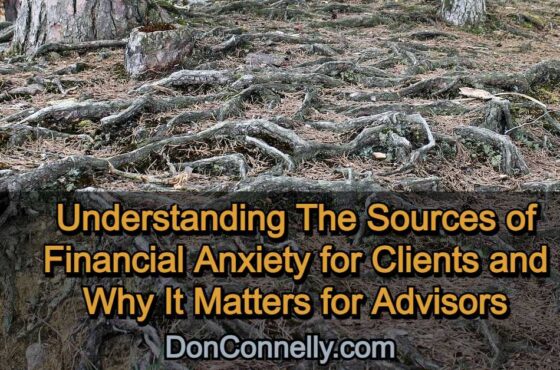What Not to Do in Building Lasting Client Relationships

For financial advisors, building lasting client relationships is as essential as it is challenging. There’s really no more important aspect of an advisor’s practice to ensure sustainable growth. While many advisors try to focus on facets in their practice to bring more value to the relationship, they tend to gloss over what not to do, which can have an even more significant impact on their relationships – and not in a good way. Here are four key “what not to do’s” all advisors need to proactively convert into a priority to-do list.
#1. Do not avoid technology
The financial services industry has been notoriously slow in adopting technology. While that is beginning to change with more advisors wading into the technology pool, your clients are moving ahead at digital speed. Your clients’ communication preferences are changing and, if you’re not changing with them, your clients may gravitate to more technologically savvy advisors.
Communication and how it is handled is important to many clients today, especially those in the Millennial, X, and Y generations. For example, email blasts are annoying to people today who are inundated with email spam. Clients will welcome your emails if they contain content that’s tailored to their needs and interests.
How do you do that? With content marketing or marketing automation tools that enable you to segment your clients in multiple ways. Once segmented, your clients will only receive content that is relevant to them. The automation tools track their responses to your emails and automatically responds with more appropriate and relevant information – like having an extended conversation with your clients. And your clients feel as if you are reaching out to them personally. It’s a great investment you can make for strengthening client relationships.
#2. Do not mismanage client expectations
The quickest way to lose a client is to allow them to get caught up in the noise from the internet, the media, and the people around them. These sources of market hyperbole can color their view of their portfolio’s performance, leading them to think they are failing if they aren’t outperforming the S&P 500. As a financial advisor, you know it is extremely difficult to beat the market and those who try to end up taking too much risk or micromanaging their investments.
Your primary job as their advisor is not to make your clients supremely wealthy. Instead, it is to prudently manage their investments and keep them focused on their goals. You can’t control the fluctuation of their portfolios’ value, but you can influence how your clients react to them. By educating them on unavoidable market volatility and what it means for their long-term portfolio performance, your clients will have more conviction in their long-term investment plan.
#3. Do not exclude any decision makers
The biggest mistake many advisors make when advising traditional married couples is to assume the husband is the decision maker. There is a misleading assumption that men express more interest in discussing financial topics. So, naturally, advisors will direct the conversation their way. For that reason, men are often the main point of contact, and their wives see the advisor relationship as their husband’s.
Consequently, when the husband dies, the advisor is basically starting a new relationship with the wife. Yet, according to studies, up to 70 percent of widows wind up striking out on their own to form their own advisory relationship. It’s even more consequential when you consider that 90 percent of women will, at some point, either through divorce or living longer than their husbands, become the sole decision maker for their family.
Advisors need to understand the importance of engaging with both parties, even if it means quieting the husband to let his wife give her thoughts. Also, according to a study by Fidelity Investments, women, in general, do not have the confidence to make financial decisions. So, taking the time to educate the wives and address their specific concerns will draw them into the conversation and the relationship.
#4. Do not forget that your primary job is Advisor, not Investment Manager
According to a survey by SEI and the Financial Planning Association, a good financial advisor is not enough for high-net-worth clients. They want their advisors to be great. While they do want good returns, they ranked having personalized service and an exceptional client experience equally high. From their perspective, that includes unfettered access to their advisor, personalized communications, value-add recommendations, frequent reporting, and the undeniable sense that their interests are utmost in their dealings with the advisor. From your perspective, that means creating the capacity to deliver on all of the above.
Financial advisors are finding that providing an excellent client experience and managing investments are both full-time jobs. Yet, according to Kitces Research, they spend nearly 50 percent of their time on functions that do little to develop new business and service clients. That might include back-office work and investment management. The question is, which full-time job is most important to your success? Is your core competency on the qualitative side of the business (client relationships) or the quantitative side (investment management)?
An increasing number of advisors are starting to allocate their time and energy differently. According to a Fidelity Clearing & Custody Solutions study, 40 percent of advisors outsource investment management and portfolio construction. The study revealed that 81 percent of advisors who outsourced key functions such as portfolio management reported an increase in their client base, and 95 percent experienced growth in assets under management. This is an opportunity to focus on the things you do best to increase your value and redefine your relationship with your clients. Highly successful advisors create enduring value that clients can’t resist. When you become the advisor who can finally help clients understand their life ambitions and how their investment program will help them achieve them, you become indispensable and referable.
If you are just starting as a Financial Advisor or you’re a seasoned professional but feel stuck and unable to move your business to the next level, watch this 4-minute video to learn how our training program ‘Become Brilliant at the Basics: What They Don’t Teach You in Training’ can help you prosper.
See program details and enroll today!
This training is available in a self-paced format (always open!) and as a 12-week coaching program (open only a few times a year, seats are limited to 25 Advisors at a time). See details and join today.



